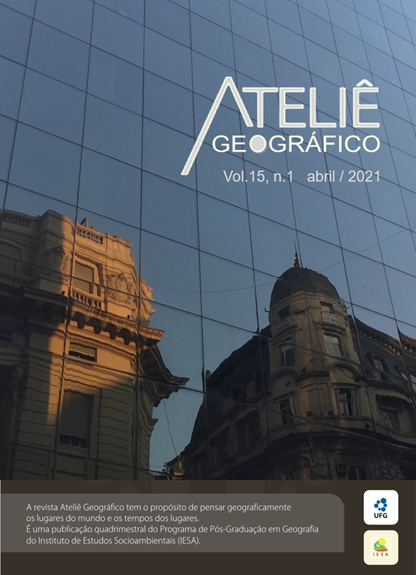Capital cities in the Northeast of Brazil: analysis of poverty indicators from census data 2010
DOI:
https://doi.org/10.5216/ag.v15i1.64538Abstract
This article seeks to understand Brazil's northeastern capital cities using variables obtained from the 2010 census data that indicate vulnerabilities, comparing the demographic dimension to the 2000 Census. The objective is to study variables and indicators that point to poverty. Firstly, the city was observed as a whole, and then contextualize the capitals/cities. It was possible to identify the most fragile capitals by means of nine variables. However, to find the Index of Socio-Spatial Inequality (IDSE), seven variables that indicate poverty in four dimensions were highlighted: Demographic Dimension; Infrastructure Dimension; Educational Dimension and Economic Dimension. The capital of São Luís has the most alarming indicators and variables, with an Index of Socio-Spatial Inequality - IDSE of 0.83, that is, the closer to 1, the greater the Socio-Spatial inequality. The capitals Salvador and Aracaju are the ones that show better indicators, with an IDSE of 0.42 and 0.39, respectively, indexes closer to 0, which is the absence of social inequality.
Keywords: capital city. Northeast, social-spatial inequalities. indicators.
Downloads
Downloads
Published
How to Cite
Issue
Section
License
Autores que publicam nesta revista concordam com os seguintes termos:- Autores mantém os direitos autorais e concedem à revista o direito de primeira publicação, com o trabalho simultaneamente licenciado sob a Licença Creative Commons Attribution que permite o compartilhamento do trabalho com reconhecimento da autoria e publicação inicial nesta revista.
- Os autores não serão remunerados pela publicação de trabalhos na Revista Ateliê Geográfico. Além disso, os conteúdos publicados são de inteira e exclusiva responsabilidade de seus autores, ainda que reservado aos editores o direito de proceder a ajustes textuais e de adequação às normas da publicação.
- Autores têm permissão e são estimulados a divulgar seu trabalho online (ex.: em repositórios institucionais ou na sua página pessoal), já que isso pode gerar alterações produtivas, bem como aumentar o impacto e a citação do trabalho publicado (Veja O Efeito do Acesso Livre).


